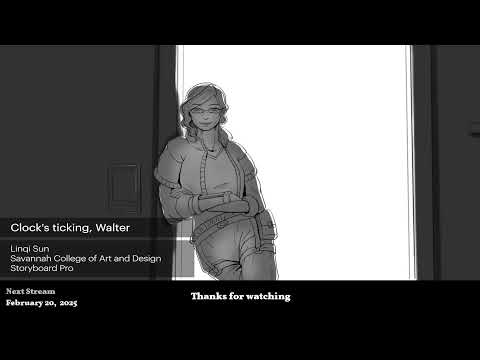Your Cart is Empty
Customer Testimonials
-
"Great customer service. The folks at Novedge were super helpful in navigating a somewhat complicated order including software upgrades and serial numbers in various stages of inactivity. They were friendly and helpful throughout the process.."
Ruben Ruckmark
"Quick & very helpful. We have been using Novedge for years and are very happy with their quick service when we need to make a purchase and excellent support resolving any issues."
Will Woodson
"Scott is the best. He reminds me about subscriptions dates, guides me in the correct direction for updates. He always responds promptly to me. He is literally the reason I continue to work with Novedge and will do so in the future."
Edward Mchugh
"Calvin Lok is “the man”. After my purchase of Sketchup 2021, he called me and provided step-by-step instructions to ease me through difficulties I was having with the setup of my new software."
Mike Borzage
Design Software History: Evolution of Design Software in Renewable Energy: Historical Insights and Future Trends
January 12, 2025 6 min read


Introduction to Renewable Energy Systems and Design Software
Renewable energy systems have emerged as a critical component in the global transition toward sustainable and environmentally friendly energy solutions. With the increasing urgency to address climate change and reduce greenhouse gas emissions, the significance of harnessing energy from renewable sources like solar, wind, hydro, and geothermal has never been more pronounced. These systems offer the dual benefits of mitigating environmental impact and providing energy security by reducing dependence on finite fossil fuels. In this dynamic landscape, the role of design software has been instrumental in advancing renewable energy technologies, enabling engineers and architects to conceptualize, model, and optimize complex projects with unprecedented precision and efficiency.
The integration of design software into renewable energy projects facilitates a seamless transition from theoretical concepts to practical implementations. These sophisticated tools allow for detailed simulations of energy systems, accounting for variables such as weather patterns, geographic constraints, and material efficiencies. By leveraging advanced computational capabilities, professionals can predict the performance of renewable energy installations, optimize their configurations, and assess potential environmental impacts before any physical construction begins. This proactive approach not only enhances the viability and effectiveness of renewable energy systems but also significantly reduces costs and development time.
A brief look at the historical evolution of design software in engineering and architecture reveals a rapid progression from rudimentary drafting programs to comprehensive platforms capable of handling intricate designs and analyses. The advent of Computer-Aided Design (CAD) in the 1960s revolutionized the engineering field by introducing digital tools that replaced manual drafting, leading to increased accuracy and efficiency. Over the decades, these tools have evolved to incorporate three-dimensional modeling, parametric design, and collaborative features, all of which are crucial for the complex requirements of renewable energy projects. This evolution has not only transformed design methodologies but has also expanded the possibilities for innovation in renewable energy technologies.
Foundations of Design Software in Renewable Energy
The early developments in design software set the stage for its pivotal role in renewable energy. The initial use of CAD tools in designing renewable energy structures and elements marked a significant departure from traditional engineering practices. Engineers and architects began utilizing software to create detailed plans for solar panels, wind turbines, and hydropower systems. These tools allowed for precise calculations and adjustments, enabling the optimization of designs to maximize energy capture and efficiency. By simulating environmental conditions and structural responses, early CAD applications helped identify potential issues before construction, saving time and resources.
Historical examples of early software applications in solar and wind projects illustrate the transformative impact of design software. In the 1970s, as the oil crisis spurred interest in alternative energy sources, engineers employed CAD programs to design more efficient wind turbine blades. The ability to model aerodynamic profiles and simulate wind flow led to significant improvements in turbine performance. Similarly, in solar energy, software tools facilitated the calculation of optimal angles and placements for photovoltaic panels, enhancing their ability to capture sunlight throughout the year. These innovations were critical in establishing renewable energy as a viable alternative to traditional power sources.
Pioneering companies like Autodesk and Siemens played a crucial role in developing software tailored to the needs of renewable energy. Autodesk, founded by John Walker in 1982, introduced AutoCAD, which quickly became the industry standard for design and drafting. The company's software enabled engineers to create intricate designs with greater ease and accuracy, fostering innovation in renewable energy projects. Siemens, a global leader in engineering and technology, developed integrated solutions that combined hardware and software to optimize energy systems. Their PLM (Product Lifecycle Management) software facilitated collaboration across different engineering disciplines, streamlining the development process.
Influential figures such as Ivan Sutherland, often referred to as the "father of computer graphics," and Patrick Hanrahan, co-founder of Tableau Software and a key contributor to rendering algorithms, made significant contributions to the field. Sutherland's creation of Sketchpad in 1963 laid the groundwork for graphical user interfaces and interactive design software. Hanrahan's work in rendering and visualization techniques enhanced the ability of software to accurately represent complex designs, which is essential in modeling renewable energy systems. Their innovations have had a lasting impact on how technology intersects with renewable energy, enabling more sophisticated and efficient design methodologies.
Advancements in Design Software for Renewable Energy Systems
Modern design software has expanded capabilities that significantly enhance the development of renewable energy systems. Current tools and platforms, such as Autodesk Revit, ANSYS Fluent, and PTC Creo, offer comprehensive solutions for designing and optimizing renewable resources. These software suites enable detailed 3D modeling, simulation of environmental conditions, and analysis of structural performance. The ability to create accurate models of wind turbines, solar panels, and other renewable infrastructure allows engineers to predict how these systems will perform under real-world conditions.
One of the most significant advancements is the integration of simulation, optimization, and real-time data into the design process. Simulation tools allow for the virtual testing of designs against a variety of environmental factors, such as wind speed fluctuations or changes in solar irradiance. Optimization algorithms can adjust design parameters to achieve the best possible performance, considering factors like cost, efficiency, and durability. The incorporation of real-time data enables continuous improvement and adaptation of energy systems. For instance, software can use current weather data to adjust the angle of solar panels or the orientation of wind turbines for optimal energy production.
While specific case studies are not mentioned, it's evident that software innovations have led to more efficient and sustainable system designs. Engineers now have access to tools that support:
- Interdisciplinary collaboration: Facilitating communication between mechanical, electrical, and civil engineers to integrate different aspects of renewable energy systems.
- Advanced materials analysis: Evaluating new materials for components, such as composites for turbine blades, to improve performance and longevity.
- Lifecycle assessment: Analyzing the environmental impact of systems from production to decommissioning to ensure sustainability.
These advancements in design software not only enhance the technical aspects of renewable energy projects but also contribute to their economic viability by reducing costs and increasing returns on investment. The ability to create more accurate and efficient designs accelerates the adoption of renewable energy technologies worldwide.
Future Trends and Challenges in Design Software for Renewable Energy
The future of design software in renewable energy is being shaped by emerging technologies that promise to revolutionize how systems are designed and operated. The integration of Artificial Intelligence (AI), Machine Learning (ML), and the Internet of Things (IoT) is poised to enhance the capabilities of design software significantly. AI and ML algorithms can process vast amounts of data to identify patterns and optimize designs beyond human capabilities. For example, AI can generate multiple design iterations rapidly, selecting the most efficient configurations based on predefined criteria. The IoT connects devices and sensors within energy systems, providing real-time data that can be used to adjust operations and improve performance continuously.
The integration of Augmented Reality (AR) and Virtual Reality (VR) into renewable energy design workflows is another emerging trend. AR and VR technologies enable immersive visualization of designs, allowing engineers to interact with models in a three-dimensional space. This enhances understanding of complex systems and facilitates better decision-making. AR can overlay digital information onto the physical world, assisting with on-site installations and maintenance. VR provides a virtual environment for testing and refinement, reducing the need for physical prototypes and accelerating the development process.
Despite these technological advancements, there are challenges in making advanced design software accessible to smaller firms and startups. High costs associated with software licenses, hardware requirements, and training can be prohibitive. Additionally, there is a learning curve in adopting new technologies, which can deter smaller organizations from integrating these tools into their workflows. Addressing these challenges is critical for ensuring that innovation in renewable energy design is not limited to large corporations.
The impact of design software on the sustainability of energy systems and environmental considerations remains a central focus. As software becomes more advanced, there is an opportunity to incorporate features that assess and minimize environmental impacts. This includes tools for evaluating the carbon footprint of materials, optimizing designs for recyclability, and ensuring compliance with environmental regulations. By embedding sustainability into the design process, software can play a pivotal role in promoting environmentally responsible practices in renewable energy development.
Conclusion
The transformational impact of design software on renewable energy systems is evident in the enhanced capabilities and efficiencies achieved in recent decades. By providing powerful tools for modeling, simulation, and optimization, design software has enabled the development of complex renewable energy projects that are both economically viable and environmentally sustainable. The ongoing evolution of these tools continues to push the boundaries of what is possible, opening new avenues for innovation in the energy sector.
Reflecting on this evolution, it is clear that software innovations have been a driving force behind the rapid advancement of renewable energy technologies. The integration of AI, ML, IoT, AR, and VR holds immense potential for further enhancements. These technologies promise to make design processes more efficient, systems more adaptable, and energy production more sustainable. The convergence of digital and physical systems in renewable energy represents a significant step toward achieving global sustainability goals.
Encouraging ongoing investment in technology is essential to bolster sustainable energy initiatives. By supporting research and development in design software and making these tools more accessible, governments and industry leaders can promote widespread adoption of renewable energy. Such investment will not only drive technological advancements but also facilitate the transition to a more sustainable and resilient energy infrastructure for future generations.
Also in Design News

2D/3D Animation:Collaboratory with Mike Morris and Aaron Paetz
February 20, 2025 1 min read
Read More
ZBrush Tip: Enhancing Organic Sculpting Techniques in ZBrush: Key Tips and Resources
February 20, 2025 2 min read
Read More
Revit Tip: Mastering Revit's Edit Profile Tool for Customized Design Efficiency
February 20, 2025 2 min read
Read MoreSubscribe
Sign up to get the latest on sales, new releases and more …


